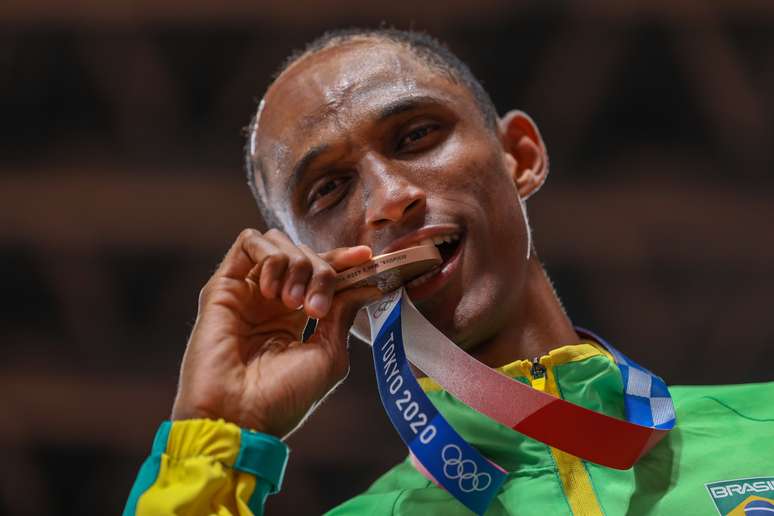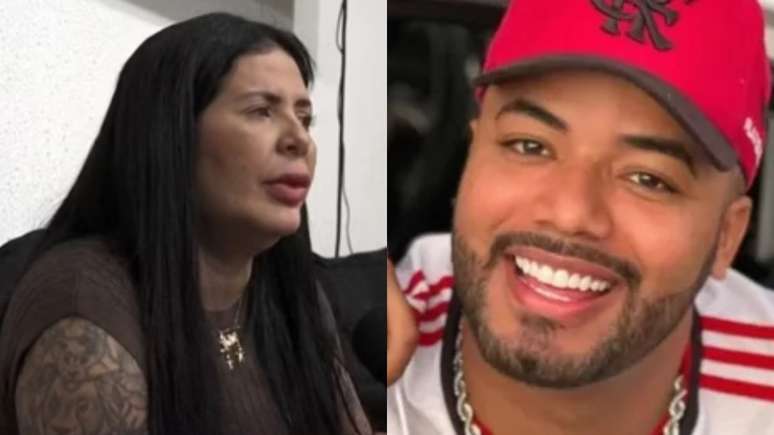The athlete had an accident with hot oil when he was 10 months old; According to a dermatologist, it is possible to reduce scars, but difficult to eliminate them
Even today, Alison dos Santos still bears the scars of a domestic accident she suffered when she was just 10 months old. The athlete was the victim of a pan full of boiling oil, which caused burns to her head, shoulders and arms.
However, more than the scars, Alison carries with her the bronze medal she won at Tokyo 2020, the title of Brazil’s first world champion in athletics in 2022, and she still holds the gold medal from the Pan American Games in Lima, Peru, in 2019.

The Olympic medalist, affectionately known by his nickname Piu as a teenager, is Brazil’s hope for a medal in the 400-meter sprint and 400-meter hurdles in track and field.
Although he is 24 years old, Piu does not look his age due to the scars left by childhood burns, which he hid with caps during his adolescence. The most obvious are on the top of his head, which caused him to lose part of his hair, on part of his forehead and on the right side of his face.

Treatments reduce, but do not guarantee the elimination of scars
In an interview with Earth youDermatologist and member of the Brazilian Society of Dermatology, Lucas Miranda, explains that there are options available to improve the aesthetic appearance of burn scars.
According to the dermatologist, the ideal time to start treatment depends on the stage of the scar. In the acute phase, the first few days after the burn, the priority is healing the wound, using adequate dressings and avoiding infections.
“In the subacute phase, after complete re-epithelialization (usually 2-3 weeks), treatments such as silicone plates and massage can be introduced. In the chronic phase, after 3 months, more invasive treatments can be considered, such as laser therapy and corticosteroid injections,” explains the specialist.
The doctor explains that each treatment has its risks and possible complications. Laser therapy, for example, can cause hyper or hypopigmentation, infections and inadequate healing if not performed correctly.
- In micropuncture there may be a risk of infection and pain during the procedure;
- The use of intralesional corticosteroids may cause skin atrophy, telangiectasia, and hypopigmentation;
- Silicone gel or plates may cause irritation in some cases;
- Pressure treatment can be uncomfortable and requires prolonged use, while scar revision surgery carries the risk of infection, bleeding, and new scar formation.
“It’s important to set realistic expectations with patients and their families. While treatments can significantly improve the appearance of scars, they are unlikely to disappear completely,” he emphasizes.
In addition to medical interventions, certain practices can help improve the appearance of burns, such as keeping the skin moisturized, which helps with the elasticity and appearance of the scar, using sunscreen to prevent hyperpigmentation, massaging the scar with oils or creams to improve circulation and flexibility, and protecting the scar area to prevent further trauma.
Source: Terra
Ben Stock is a lifestyle journalist and author at Gossipify. He writes about topics such as health, wellness, travel, food and home decor. He provides practical advice and inspiration to improve well-being, keeps readers up to date with latest lifestyle news and trends, known for his engaging writing style, in-depth analysis and unique perspectives.








